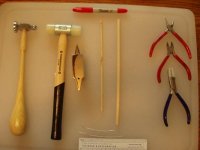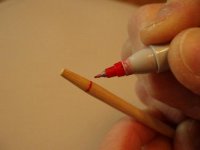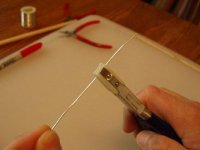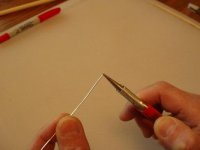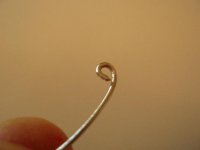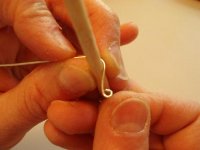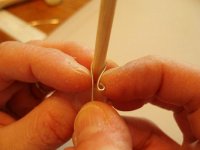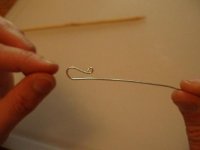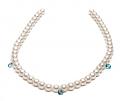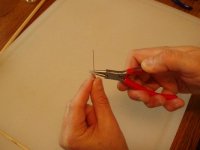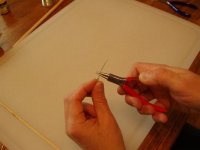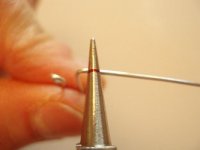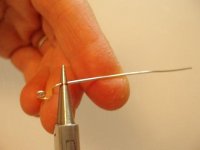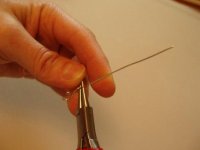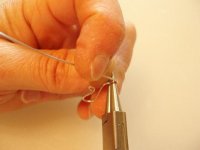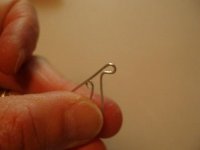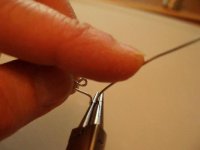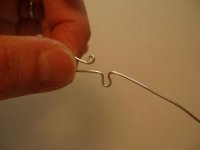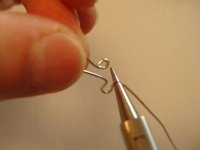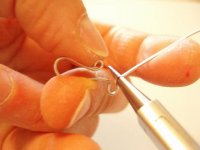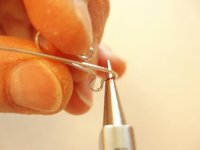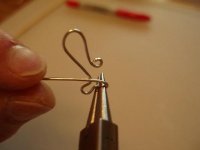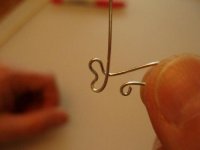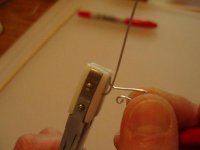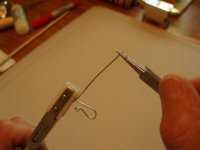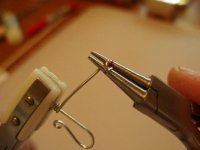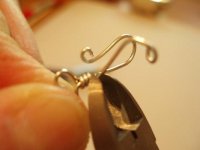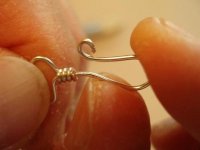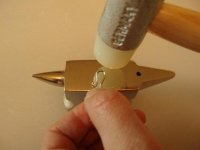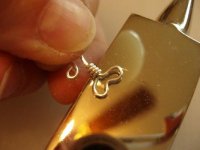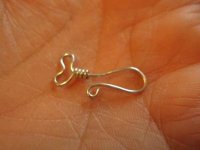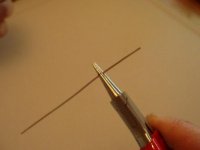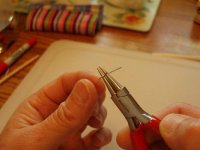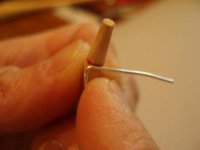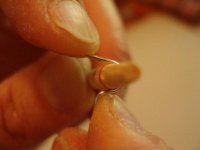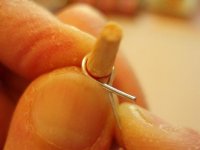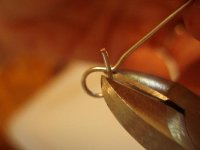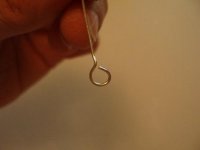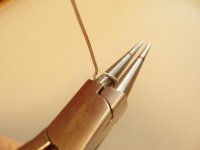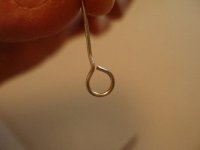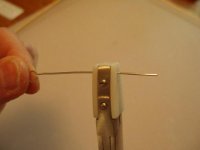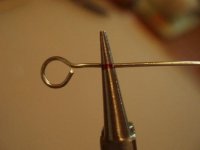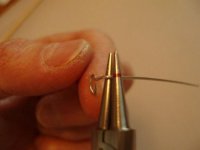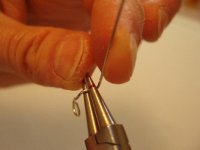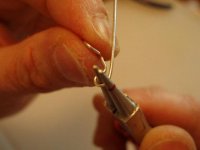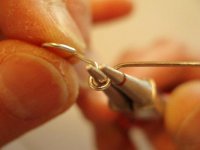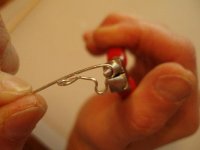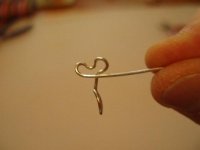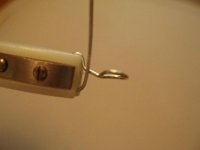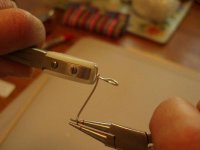Pearl Dreams
Pearl Enthusiast
- Joined
- Sep 24, 2007
- Messages
- 9,717
Here is the tutorial on making the 2 strand hook and eye clasp. The heart-shaped loops on the hook and eye allow you to attach two strands.
(Edit: Further on in the thread we work on a 3 strand clasp I'm calling the 3-Petal clasp. See photos on pages 4 and 5)
There are a lot of photos! We did this because some of you may never have wrapped wire before. I tried to show where to hold your hands. I will clarify and answer questions-- please make note of the specific photo or post you have a question about.
A few pointers:
1. I used 20 gauge wire for this hook. Cut 4 inches for the hook and 3 inches for the loop.
2. Nylon head pliers are cheap and very useful to straighten wire and hold the piece without marring the wire. You can get them at a craft or beading store. (Even Michaels has them.) If you don't have them, you can still make this clasp, but be careful not to make marks on your wire with your pliers!
3. It is important to make the mark on your round nose pliers with a permanent marker. Don't skip this step! Without the mark to help you position the wire, you may end up making the two parts of the heart-shaped loop different sizes and the piece will look lopsided!
4. A nylon head mallet (hammer) is used to hammer the non-wrapped parts of the clasp when it is finished. This "work hardens" it-- it compresses the molecules of the wire and makes it strong and springy. It will not flatten the wire or make it brittle. We got ours from Rio Grande. (By contrast, hammering with a chasing hammer (steel) will make the wire more brittle and flatter.) NEVER HAMMER CROSSED WIRES-- they will break. Don't hammer the wire where it is wound (wrapped) either.
If you don't have a nylon head mallet and you still want to work harden the finished hook, you can hammer the hook with any other hard smooth plastic object-- I experimented and found that the plastic barrel of a thick permanent marker is hard enough to hammer with and didn't leave marks on the wire. If you are going to do this, experiment first with a piece of wire before you make your clasp-- you don't want to risk denting or marring your finished clasp!
(Edit: Further on in the thread we work on a 3 strand clasp I'm calling the 3-Petal clasp. See photos on pages 4 and 5)
There are a lot of photos! We did this because some of you may never have wrapped wire before. I tried to show where to hold your hands. I will clarify and answer questions-- please make note of the specific photo or post you have a question about.
A few pointers:
1. I used 20 gauge wire for this hook. Cut 4 inches for the hook and 3 inches for the loop.
2. Nylon head pliers are cheap and very useful to straighten wire and hold the piece without marring the wire. You can get them at a craft or beading store. (Even Michaels has them.) If you don't have them, you can still make this clasp, but be careful not to make marks on your wire with your pliers!
3. It is important to make the mark on your round nose pliers with a permanent marker. Don't skip this step! Without the mark to help you position the wire, you may end up making the two parts of the heart-shaped loop different sizes and the piece will look lopsided!
4. A nylon head mallet (hammer) is used to hammer the non-wrapped parts of the clasp when it is finished. This "work hardens" it-- it compresses the molecules of the wire and makes it strong and springy. It will not flatten the wire or make it brittle. We got ours from Rio Grande. (By contrast, hammering with a chasing hammer (steel) will make the wire more brittle and flatter.) NEVER HAMMER CROSSED WIRES-- they will break. Don't hammer the wire where it is wound (wrapped) either.
If you don't have a nylon head mallet and you still want to work harden the finished hook, you can hammer the hook with any other hard smooth plastic object-- I experimented and found that the plastic barrel of a thick permanent marker is hard enough to hammer with and didn't leave marks on the wire. If you are going to do this, experiment first with a piece of wire before you make your clasp-- you don't want to risk denting or marring your finished clasp!
Attachments
Last edited:


